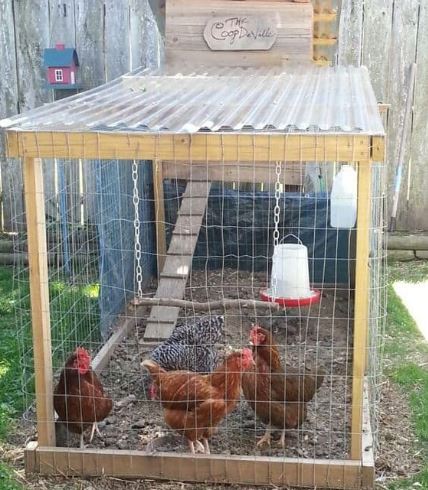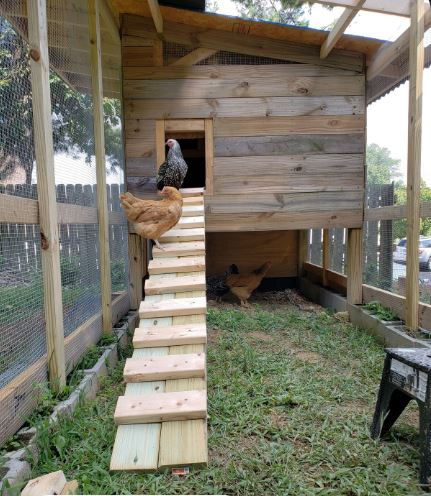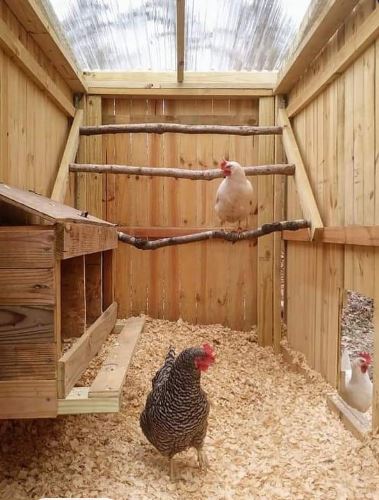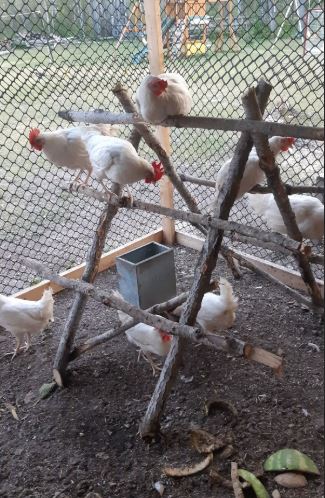Building or choosing the right chicken house is essential for ensuring the health, comfort, and safety of your flock. Whether you’re raising a few hens for fresh eggs or a larger group for a small farm, your chicken house should combine practicality with thoughtful design.
Here are some ideas to inspire your chicken house project, from compact urban coops to spacious country enclosures.
Fits for Urban Living Coops
Compact coops make sense for the backyard chicken keeper in an urban or suburban location. The few hens that can be stashed away can fit into small structures in limited outdoor space. Find ones with a raised design to spare ground area and permit a shaded spot underneath for your chickens to lounge.
Add nesting boxes that have outside access for easy egg collection and sliding trays for cleaning. To make it appealing, paint in vibrant colors or add beautiful flower boxes that make it a style statement for your backyard.

Portable Chicken Tractors
A chicken tractor is a mobile coop that allows you to move your chickens regularly to fresh patches of grass. These are ideal for small numbers of chickens and ensure your chickens have clean foraging areas available while fertilizing your yard in a naturally benign fashion.
Design the tractor with light materials such as wood and mesh and attach the wheels for a rather high mobility rate. Provide a shelter area with nesting boxes and perches to keep your chicken safe from the elements and predators.
Spacious Walk-in Coops
A walk-in coop is perfect for bigger flocks or in the rural setting for more open space and accessibility. The advantage of these coops is that it’s easier to enter the structure to clean, feed, and gather eggs.
Use weatherproof wood with the metal roofing of a solid shelter whereby no weather force will damage.
Section the space into nesting, roosting, and feeding areas for every chicken to be given ample space. Having large windows or wire mesh panels significantly increases air ventilation and natural light that keeps the coop fresh and comfortable.

Combined Runs
Many designs for chicken houses include attached runs, so your chickens can roam freely while remaining safe. A built-in run is especially useful if free-ranging just isn’t possible wide variety of predators or limited space.
Design the run with a secure wire mesh with a roof and cover it to protect your chickens from rain and aerial predators. Adding more functionality, use predator-proof hardware cloth instead of chicken wire as it’s also stronger and harder-wearing.
Recycled and Upcycled Designs
Making a coop from recycled or upcycled materials benefits environmentally conscious chicken raisers because it is budget-friendly and very sustainable. Pallets, crates, or even a repurposed garden shed can be repurposed into beautiful chicken houses.
Ensure the materials are safe for chickens by avoiding treated wood or paints containing harmful chemicals. Add creative touches like reclaimed windows for ventilation or decorative shingles for a rustic look.

Multi-Level Coops
Multi-level coops can be a good option if space is an issue but functionality is the priority. Such designs provide segregation for nesting, roosting, and feeding on the same coop, often utilizing vertical space.
Add ramps or ladders for easy passage of chickens between levels. Multi-level coops are excellent for medium-sized flocks but can have a very small footprint.
Predator-Proof features
Lock up predators. Chicken houses should have strong latches and strong wire mesh or reinforced corners. Last, the coop should not sit on the ground because of the risk currently existing from digging predators such as foxes and raccoons.
To install additional security, an automatic door that closes at dusk might be added to keep chickens safely locked into the coop overnight. An apron with the hardware cloth buried down around the coop prevents predators from digging underneath.

Climate Considerations
It should be capable of withstanding your local weather. In colder areas, the coop should be insulated and have a heat source, such as a safe heating panel, to keep the chickens warm in winter. Ventilation is also an absolute must so that no moisture builds up and fresh air circulates inside.
Shading and ventilation: it’s all about keeping things cool in the tropics. Use metal roofing to reflect heat, add vents or fans to counteract it, and construct an outdoor shaded area covered with a tarp or tree for comfort.
Aesthetic Designs
Chicken houses do not have to be strictly utilitarian; they can also serve as garden beautifiers. From Victorian-inspired coops with decorative trim to modern minimalist designs with sleek lines, there are countless ways to make your chicken house a standout feature.
Choose colors that can match what’s in your home or garden, and playful touches of quirky signs, picket fences, or simply artistic painting-the sort of details that make the chicken house a welcome addition to your outdoor space yet it reflects your sense of individuality.

Conclusion
A well-designed chicken house is important in keeping your flock healthy, happy, and safe. From compact urban coop designs to portable chicken tractors or spacious walk-in designs, tailoring the chicken house to one’s needs and style makes for a better experience in chicken keeping.
Functionality combined with thoughtful design will produce a chicken house that not only is practical in structure but also adds a charming aspect to a property.
